Table of contents
The Cinnamon stick (genus Cinnamomum ), also called cinnamon stick or kaneel , There are different origins. Ceylon cinnamon is much more expensive and of higher quality than Cassia cinnamon, for example. Commercially available mixtures usually contain only a small amount of healthy Ceylon cinnamon and are harmful if consumed in large quantities. Cinnamon is available raw for raw food and in organic quality.
Using cinnamon sticks in the kitchen:
What do you do with cinnamon sticks? In Europe, cinnamon sticks (cinnamon sticks), similar to ground cinnamon , are used in sweet dishes such as apple sauce , compote and fruit salads. Desserts such as casseroles or semolina pudding can also be refined with a piece of cinnamon bark. In autumn, cooked red or red cabbage can be rounded off with the aroma of cinnamon sticks. In the run-up to Christmas, aromatic cinnamon is added to hot drinks such as mulled wine, punch and tea, or it is used to refine liqueurs (e.g. nut liqueur). You can also add something special to chai tea or coffee with a cinnamon stick.
In Middle Eastern cuisine, hearty and spicy dishes such as curries are also flavoured with cinnamon sticks. Red wine sauces, Christmas tomato sauces or even homemade tomato ketchup can also be refined with a cinnamon stick.
How do you use cinnamon sticks? You can cook the cinnamon bark whole and remove it before eating - or you can rub the dry cinnamon stick over the dish just before serving. It is best to use Ceylon cinnamon, because the cheaper and lower quality versions with thicker barks (Cassia cinnamon from China or Indonesian cinnamon) can give off a bitter taste when cooked. You can find out more about the difference between Ceylon and Cassia cinnamon in the chapter "Purchasing - where to buy cinnamon sticks?".
Vegan recipe for homemade curry powder with Ceylon cinnamon:
Ingredients: 3 sticks of cinnamon (cinnamon sticks, Ceylon), 4 tbsp coriander seeds , 1 tbsp cumin seeds , 2 tbspblack peppercorns , 12 cardamom pods , 1 tsp cloves , 10 curry leaves , 10 stalks of lemongrass , 1 tbsp uncooked rice , 1 tbsp mustard seeds .
Preparation: Finely grind all ingredients in a coffee grinder or spice grinder. The curry powder is strong and hot. If you want to make it even hotter, you can add dried chili .
Vegan recipe for tea with cinnamon bark:
Pour boiling water over 1 teaspoon of cinnamon bark and let it steep for about 10 minutes. Then remove the cinnamon bark from the tea water and let it cool down. To avoid having too many small pieces of bark in the tea, you can use a tea strainer or a tea bag.
Vegan recipes with cinnamon sticks can be found under the note: " Recipes that have the most of this ingredient ".
| Not only vegans or vegetarians should read this: Vegans often eat unhealthily. Avoidable nutritional mistakes . |
Shopping - where to buy cinnamon sticks?
At supermarket chains such as Coop , Migros , Denner , Volg , Spar , Aldi , Lidl , Rewe , Edeka , Hofer , Billa etc. you can usually buy cinnamon sticks all year round. Cassia cinnamon is mainly available. Where to buy good cinnamon? The better, more expensive Ceylon cinnamon are only offered by selected supermarkets, organic supermarkets (e.g. Alnatura , Denn's Biomarkt ), health food stores, organic shops, drugstores, some pharmacies and reputable online shops. If there is no name on the packaging, but the origin is stated as Sri Lanka, then it is Ceylon cinnamon. Cinnamon sticks are often available in organic quality and as a fair trade product.
Ceylon cinnamon can be recognized by several thin, fine layers that are rolled up into a closed stick. These sticks are rarely rolled up on both sides - their cross-section is more like that of a cigar. Cheaper cinnamon tubes from China or Indonesia or cassia cinnamon are thicker and almost always roll up on both sides. If possible, avoid cassia cinnamon, as it is of inferior quality and has negative health effects. Instead, choose Ceylon cinnamon. More on this in the chapters "Danger - Intolerances - Side Effects" and "Health Aspects - Effects".
Found in the wild:
The true cinnamon tree ( Cinnamomum verum or C. zeylanicum ) grows wild on the island of Sri Lanka, in southwest India and in the Tenasserim Mountains in Burma (Myanmar). 14
Storage:
To preserve the aroma optimally, the cinnamon sticks should always be stored in a cool, dry and dark place. Airtight containers are even better for this. Real cinnamon, which consists of several thin layers, can retain its aroma for a very long time.
Ingredients - nutritional values - calories:
Here we realistically show you the ingredients of spices and herbs per 1 g (instead of per 100 g as usual).
The ingredients shown here come from the United States Department of Agriculture . There is no information about their origin, which is why we assume it is a mixture of different types of cinnamon.
Cinnamon has 2.47 kcal per 1 g. The main components are carbohydrates (0.81 g/1g) and the fiber they contain (0.53 g/1g). Cinnamon has little protein (0.04 g/1g) and hardly any fat (0.012 g/1g). 2
Cinnamon contains a number of healthy macro and micronutrients. However, as with all spices, you only consume very small amounts of them. The trace element manganese is the most important in cinnamon. With 0.17 mg/1g, at least 11.77 g of cinnamon would cover the daily requirement of manganese (2-5 mg) 4. However, this dose is much too high. It is simply intended to illustrate that spices can also help to cover the daily requirement. Other spices contain significantly more manganese: ground turmeric (0.20 mg/1g), saffron (0.28 mg/1g) and cloves (0.60 mg/1g). 2
Cinnamon contains slightly less iron, but it still has a significant amount (0.083 mg/1g). Many spices, herbs and seeds have a high iron content: dried thyme provides 1.24 mg/1g andpumpkin seeds 0.088 mg/1g. But grains ( amaranth : 0.076 mg), pulses ( lentils : 0.065 mg) and vegetables ( spinach : 0.027 mg) also provide the body with easily usable iron. 2
Cinnamon contains a lot of the macronutrient calcium : 1 g of cinnamon contains 10.02 mg. Green vegetables and herbs are excellent sources of calcium: nettle leaves provide 4.81 mg, basil 1.77 mg/1g. But nuts and seeds are also rich in calcium: sesame has 9.75 mg and almonds 2.69 mg/1g. 2
Cinnamon also contains traces of vitamins: the fat-soluble vitamin K is found mainly in green vegetables and is contained in cinnamon at 0.31 µg/1g. Mung bean sprouts have a similar value at 0.33 µg/1g, while chard has much more vitamin K at 8.30 µg/1g . 2
Ceylon cinnamon has high amounts of eugenol 27 and little coumarin (0.004%, 0.40 µg/1g) 3 . Its taste is fine and mild. Cassia cinnamon, on the other hand, contains a lot of coumarin (up to 1%, 0.01 mg/1g) 3 and little to no eugenol. This is why Cassia cinnamon tastes stronger and slightly sweet. You can find more information about coumarin under "Dangers - Intolerances - Side Effects".
Dangers - Intolerances - Side effects:
Cassia cinnamon, but also Indonesian and Vietnamese cinnamon, contain a high proportion of coumarin, which can be harmful to health in excessive quantities. Industrially processed products almost exclusively contain this type of cinnamon. If possible, Ceylon cinnamon should be preferred.
In large quantities, coumarin can cause severe headaches, vomiting, dizziness and drowsiness. In extremely high doses, it causes central paralysis, respiratory arrest and coma. In large quantities, coumarin also causes liver toxicity. 12,13
According to the European Food Safety Authority ( ESFA ) and the Federal Institute for Risk Assessment ( BfR ), the TDI (tolerable daily intake) value for coumarin is 0.1 mg/kg body weight. If a child eats 6 commercially available cinnamon stars or 100 g of gingerbread, they exceed this TDI value. Cinnamon in ready-made products comes almost exclusively from China, Indonesia or Vietnam. Cinnamon capsules offered to diabetics can therefore exceed the recommended amount. 13
It should be noted that synthetic coumarin was previously permitted to be used as a medicine (for venous disorders) or as a flavoring in food and drinks without restrictions - this is where this limit comes from. Today we know that the normal use of spices containing coumarin has no negative effects on healthy people. In tests on rats, damage only occurred after extreme overdoses. According to German authorities, half a teaspoon of ground cinnamon daily (approx. 1.6 g) is safe for healthy people. The recommended upper limit for cassia cinnamon is 600 g per year. Can you eat cinnamon sticks? You should not eat a whole cinnamon stick.
Health aspects - effects:
Cinnamon bark has been used since ancient times and early modern times to treat coughs, colds and stomach problems. 5 Its diuretic, laxative, menstruation-stimulating and hemostatic effects are still used today. Both cinnamon oil and the entire bark have an antimicrobial activity, which is due to the cinnamaldehyde. 6
Cinnamon - whether ground or whole - can lower blood sugar and LDL blood cholesterol as well as triglyceride levels and is therefore very popular with diabetics. 7 Cinnamon is also said to have a positive effect on blood sugar levels in healthy people because it delays stomach emptying and thus allows glucose to enter the blood more slowly. 8
Cinnamon also has a warming effect, which increases energy consumption. A healthy diet combined with regular cinnamon use can stimulate body fat reduction. 8
Can you lose weight with cinnamon? The results of studies indicate that cinnamon supplements promote the reduction of body weight and BMI, but not for the reduction of waist circumference as previously assumed. According to one meta-analysis, 2-3 g of cinnamon per day 25 are needed to achieve an effect, according to another, more than 3 g per day 26 . However, the effect of cinnamon only helps to a limited extent in helping with weight loss. See the article " Lose weight healthily and permanently ".
There are studies on cassia cinnamon that show that the coumarin it contains has anti-tumor activity. 11 An aqueous solution of cassia cinnamon is said to initiate cell death in cervical cancer cells. 10 This contradicts the above-mentioned dangers that have been addressed in science - especially with regard to coumarin.
In vitro studies on Alzheimer's disease have shown that cinnamon can block the formation of harmful deposits in the brain and also break them down. 9
Eugenol, which is contained in Ceylon cinnamon, has anti-inflammatory and antioxidant properties and can therefore contribute to a healthy lifestyle. 27
Use as a medicinal plant:
Cinnamon bark (Cinnamomi cortex) is also used as a medicinal plant. The appetite-stimulating and digestive effects of cinnamon bark have been confirmed to date in the form of stomach teas. Cinnamon bark is used in the form of tinctures for digestive problems, a feeling of fullness, flatulence, loss of appetite and mild cramp-like pains (e.g. during menstruation).
Cinnamon is not recommended during pregnancy or if you have stomach or intestinal ulcers. Some people react to cinnamaldehyde with allergic skin and mucous membrane reactions.
The essential oil of the cinnamon tree is extracted from the leaves or bark using steam distillation. Both oils are very irritating to the skin and are not recommended during pregnancy. However, the labor-inducing effect can be useful during childbirth. The cinnamaldehyde contained in the oil has a beneficial effect on progesterone synthesis. 15
Folk medicine - natural medicine:
In folk medicine, the use of cinnamon drops against heavy menstrual bleeding has been maintained. The mixture of cinnamon and clove oil is also used as a home remedy against toothache. 1
Occurrence - Origin:
Where does cinnamon come from? Since ancient times, cinnamon has been known and used as a spice, incense, medicinal product and aphrodisiac. The origin of the cinnamon tree ( Cinnamomum zeylanicum ) lies in the tropical rainforests of southern India, more precisely in Sri Lanka (formerly known as Ceylon). 16 The cinnamon tree is also called Ceylon cinnamon , but it is also known as Kanell or Kaneel. Today it is cultivated in many other tropical countries such as Madagascar and Zanzibar. 17
The bark of Ceylon cinnamon consists of several fine layers that are as thin as paper. When rolled up, they form a closed stick. In order to determine the quality of Ceylon cinnamon, a unit of value called Ekelle was invented. The best cinnamon receives the Ekelle 00000, inferior sticks can drop to a value of 0, via I to V. 18 The price depends mainly on the condition of the cinnamon rolls.
Although it is similar in taste to real cinnamon, cassia cinnamon ( Cinnamomum cassia ) is not actually real cinnamon. The Chinese cinnamon tree, which comes from Burma and southern China, is a spice in its own right and is inferior to Ceylon cinnamon and significantly cheaper. 4,000 years ago, cassia bark was used as an incense and for embalming. In Europe, this bark was traded before real cinnamon. This spice is also known as spice bark because the barky bark is used directly. Cassia cinnamon is rough, bumpy and dark gray on the outside. Its taste is coarser and somewhat bitter and astringent.
In the USA and the Netherlands, cinnamon is also being replaced by Indonesian cinnamon ( Cinnamomum burmannii ). It is usually found in ground form and is almost indistinguishable from other types. The bark of Indonesian cinnamon is 1-3 mm thicker than that of Ceylonese cinnamon. It is usually rolled up at both ends and does not form a closed stick.
Vietnamese cinnamon or Saigon cinnamon ( Cinnamomum loureirii or loureiroi ) looks similar to the Chinese variety. The individual pieces are somewhat smaller and thinner. Lichen growth is often visible on the outside. Until 1989, Vietnamese cinnamon dominated the Eastern European market. Today, it is rarely found outside of Vietnam.
Cultivation - Harvest:
The cinnamon tree ( Cinnamomum ) is an evergreen tree that can reach a height of 5-6 m. Some wild forms grow up to 20 m high. For cultivation, the trees are cut back to a main trunk, similar to the willow tree. The bark is obtained from the young shoots, which are cut into 3 m long rods. 16,19 The variety of species is very large. Ceylon cinnamon has broad, leathery leaves and Chinese cinnamon can be recognized by its narrow, larger, egg-shaped leaves. 20
Further processing of the cinnamon bark:
The bark of the Cinnamomum cassia does not require fermentation. The outer bark is peeled off and can be used after the drying process.
In the case of real cinnamon ( Cinnamomum zeylanicum ), however, the bark is left to ferment 24 hours after the cinnamon tree is harvested. 21 To do this, the young branches are kept in mats after harvesting, where a natural fermentation takes place, which contributes to the development of the typical cinnamon flavor. To obtain high-quality Ceylon cinnamon, the outer bark, which is not used as a spice, is first separated. Underneath is the actual cinnamon bark (bast). This tender bark is carefully peeled off in thin layers and cut into 20-30 cm long pieces. Then several layers are placed on top of each other and rolled up by hand. By drying for days and re-rolling daily, you get self-contained sticks (so-called quills) that are reminiscent of cigars. 22
Danger of confusion:
There are various botanical species with a cinnamon-like taste, but they are not cinnamon. These species are also used as cinnamon substitutes: white or Magellanic cinnamon ( Canella winterana ), winter bark or winter cinnamon ( Drimys winteri ), false winter bark ( Cinnamodendron corticosum ), clove cinnamon ( Dicypellium caryophyllaceum ) and massoi bark ( Cryptocarya massoia ). 23 Ecuadorian cinnamon or American cinnamon ( Ocotea quixos ) and Amazon cinnamon ( Aniba canelilla ) also belong here.
Some species or genera are called "cinnamon" but have nothing in common with the cinnamon plant - except perhaps the color: cinnamon alder ( Clethra ), the cinnamon rose ( Rosa majalis ) or the cinnamon apple ( Annona squamosa ) .
General information:
Cinnamon bark oil is distilled from the splintered pieces of cinnamon bark and cinnamon bark from small branches. It is used for flavoring (e.g. liqueurs) and as a fragrance for perfumes.
Alternative names:
The cinnamon tree has many different Latin synonyms. The best known are: Cinnamomum verum, C. zeylanicum, C. aromaticum, C. barthii, C. bengalese, C. biafranum . Laurus cinnamomum and Camphoria cinnamomum also stand for the Ceylon cinnamon tree. The laurel family (Lauraceae) also includes cinnamon cassia ( Cinnamomum cassia ), Indonesian cinnamon ( Cinnamomum burmannii ) and Vietnamese Saigon cinnamon ( Cinnamomum loureirii or loureiroi ). The avocado ( Persea americana ) and the bay laurel ( Laurus nobilis ) are also very well known in the laurel family. The camphor tree ( Cinnamomum camphora ) also belongs to the laurel family and is still of interest today as a drug and for the perfume industry. 24
The name cinnamon is derived from the Middle High German word zinemīn. In the past, cinnamon sticks (cinnamon sticks) were also known as Zimmet, Canehl, Kanehl, Kanell, Kaneel or Kaneel Zimt, which is derived from the Latin word for cane "canna" or tube "cannella".
In English, Ceylon cinnamon is known as Sri Lanka cinnamon or Ceylon cinnamon. Chinese cinnamon is called Cassia, Chinese cassia, Bastard cinnamon or Chinese cinnamon. Cinnamon sticks are called cinnamon sticks or quills.
Literature - Sources:
Bibliography - 23 Sources
| 1. | Pahlow M. Das grosse Buch der Heilpflanzen. Gesund durch die Heilkräfte der Natur. Nikol: Hamburg. 2013. |
| 2. | USDA United States Department of Agriculture. |
| 3. | Blahová J, Svobodová Z. Assessment of coumarin levels in ground cinnamon available in the Czech retail market. The Scientific World Journal. 2012. |
| 5. | Rossbach G, Proff P. Cassius-Felix-Interpretationen: Teile I und II. (= Würzburger medizinhistorische Forschungen. 37). Würzburg 1991. |
| 6. | Beuchat LR. Antimicrobial properties of spices and their essential oils. Natural antimicrobial systems and food preservation. 1994. |
| 7. | Khan A., Safdar M, Ali Khan MM et al. Cinnamon improves glucose and lipids of peolple with type 2 diabetes. Diabetes Care. 2003;26(12). |
| 8. | Hlebowicz J, Darwiche G, Björgell O et al. Effect of cinnamon on postprandial blood glucose, gastric emptying, and satiety in healthy subjects. The American Journal of Clinical Nutrition. 2007;85(6). |
| 9. | Petersen DW, George RC, Scaramozzino F et al. Cinnamon extract inhibits tau aggregation associated with alzheimer`s disease in vitro. J Alzheimers Dis. 2009;17(3). |
| 10. | Koppikar SJ, Choudhari AS, Suryavanshi SA et al. Aqueous cinnamon extract (ACE-c) from the bark of Cinnamomum cassia causes apoptosis in human cercival cancer cell line (SiHa) through loss of mitochondrial membrane potential. BMC Cancer. 2010;10(210). |
| 11. | Weber US, Steffan B, Siegers Cp:. Antitumor-activities of coumarin, 7-hydroxy-coumarin and its glucuronide in several human tumor cell lines. Res Commun Mol Pathol Pharmacol. 1998;99(2). |
| 12. | Elinos-Báez CM, León F, Santos E. Effects of coumarin and 7OH-coumarin on bcl-2 and Bax expressions in two human lung cancer cell lines in vitro. Cell Biology International. 2013. |
| 13. | BfR Bundesinsitut für Risikobewertung. Cassia-Zimt mit hohen Cumaringehalten nur massvoll verzehren. Bioverfügbarkeitsstudie. 2012. |
| 14. | Wikipedia Ceylon-Zimtbaum. |
| 15. | Iwaoka Y, Hashimoto R, Koizumi H et al. Selective stimulation by cinnamaldehyde of progesterone secretion in human adrenal cells. Lice science. 2010;86(23-24). |
| 16. | Brücher H. Tropische Nutzpflanzen. Ursprung, Evolution und Domestikation. Berlin: Springer Verlag. 1977. |
| 17. | Dräger K. Herkunft, Anbau und Rezeptvorschläge von Ceylon Zimt. Spicebar - Die Gewürzpioniere. Spicebar. 2016 |
| 18. | Schormüller J. Alkaloidhaltige Genussmittel, Gewürze, Kochsalz. Springer: Berlin, Heidelberg, New York. 2013 |
| 19. | Delaveau P, Lorrain M, Mortier F et al. Geheimnisse und Heilkräfte der Pflanzen. Das Beste: Zürich. 1978 |
| 20. | Stegmann A. Kräuter und Gewürze A-Z. Gruner + Jahr. Hamburg. 1978. |
| 21. | Bown D. Encyclopedia of Herbs & their uses. Dorling Kindersley: London. 1996. |
| 22. | Direktvomfeld.eu Woran erkennst du guten Zimt?. |
| 23. | Frerichs G, Arends G, Zörnig H. Hagers Handbuch der Pharmazeutischen Praxis. 2. Band. K-Z, Springer. 1949. |
| 24. | Rätsch C. Enzyklopädie der psychoaktiven Pflanzen. AT-Verlag: Aarau. 2018. |

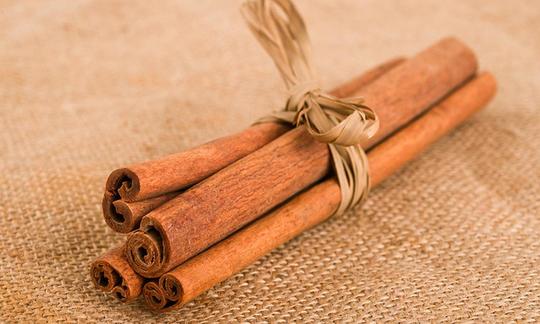

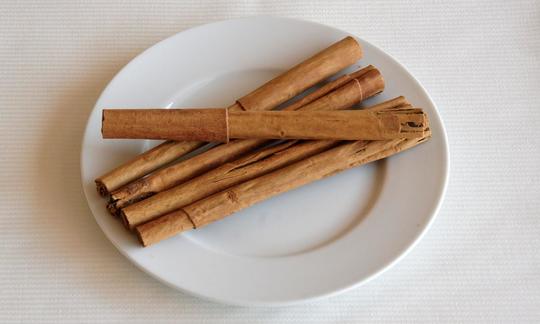

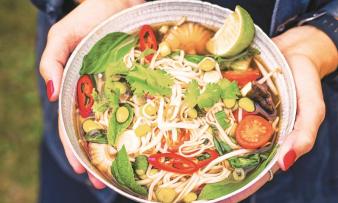
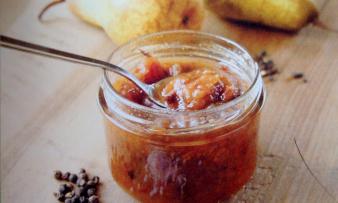
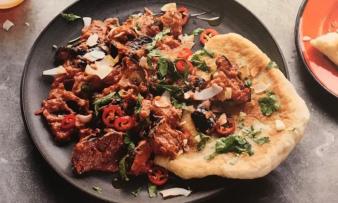





Comments